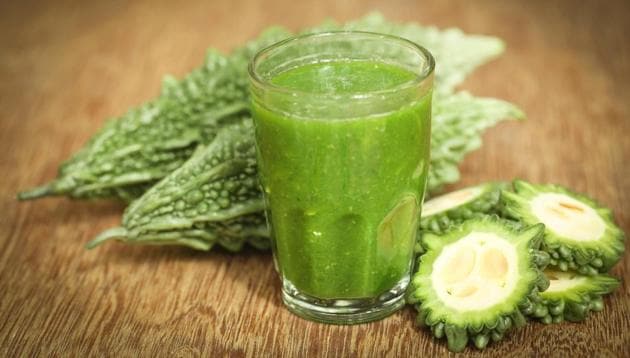Why The Bitter & Unappealing ‘Karela’ Is Actually Good For You!

Karela or bitter gourd has more haters than lovers in this world. There are not many who like the look or taste of this curvaceous vegetable. Yet, like it or not, its many benefits are undeniable. Hate it if you will, but dieticians are sure to recommend it, especially to diabetics. And there is no dearth of them in our country.
Here are some bare facts. Bitter gourd is a rich source of vitamins and minerals. It contains iron, magnesium, potassium and vitamins like A and C. It contains twice the calcium of spinach and beta-carotene of broccoli. There are various antioxidants and anti-inflammatory compounds in bitter gourd.
One of the most crucial benefits of karela is that it helps in managing diabetes. Bitter gourd is a rich source of vitamins and minerals. It contains iron, magnesium, potassium and vitamins like A and C. It contains twice the calcium of spinach and beta-carotene of broccoli. Various antioxidants and anti-inflammatory compounds are present in bitter gourd. According to studies, karela contains insulin-like substances, which help to keep blood sugar under control.
What is more, the carb count of karela is low. Both the seeds and juice of karela are beneficial. Karela just is best had in a small quantity early in the morning or in between meals. If leaving a bitter taste in the mouth first thing in the morning is not your idea of managing diabetes, you can have it in other forms such thepla and mathis or make a sabzi out of it.
Bitter gourd also reduces intestinal disorders such as constipation and Irritable Bowel Syndrome. It helps to treat the parasites that enter the digestive system. It has a natural high fibre count and natural laxative property that aid digestion.
Karela is a good source of antioxidants, necessary for the multiplication of immune cells, white blood cells and builds a strong immune system. It also has a high amount of Vitamin C. Karela juice made fresh and consumed immediately, retains most of its Vitamin C content.
Bitter gourd is a rich source of vitamins and minerals. It contains iron, magnesium, potassium and vitamins like A and C. It contains twice the calcium of spinach and beta-carotene of broccoli. Various antioxidants and anti-inflammatory compounds are present in bitter gourd.
With just 28 calories, 4.7 grams of carbs, 0.19 grams of fat, 4.8 grams of fibre and 1.8 gram of protein, it is also a weight loss vegetable. It helps in boosting the metabolism and keeps the fibre content keep the stomach full for hours.
The antioxidant and antimicrobial capacity of karela, removes toxins from the body and aids in purifying blood.
Nutrients like VitaminC, zinc and protein add lustre to the hair and promote hair growth.
How to consume bitter gourd
Bitter gourd can be consumed in vegetable form, juice, or can be made in a smoothie by adding apples and spinach to it. You can also have it as a soup, in the form of baked chips, make parathas from it and turn it into a chutney and pickle.
How to make bitter gourd less bitter:
- Sprinkle salt all over the bitter gourd pieces and let it sit for about 10 minutes. This will minimise the bitter taste of the gourd making it more palatable.
- Soak it in tamarind juice for a few minutes.
- Boil equal parts sugar and vinegar. Pour this mixture on bitter gourd and let soak for some time.
- Sauté it in olive oil.

Comments are closed.